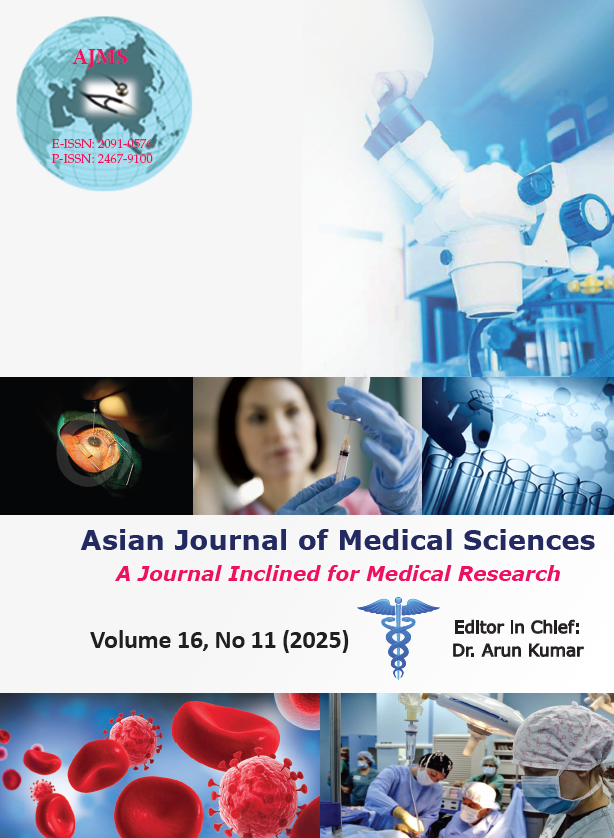A prospective comparative randomized study to asses local control and toxicity in patients with intermediate risk oral cavity squamous cell carcinoma with post-operative adjuvant radiotherapy with or without cetuximab
DOI:
https://doi.org/10.71152/ajms.v16i11.4843Keywords:
Oral cavity cancer; Post-operative; Intermediate risk factors; Cetuximab; RadiotherapyAbstract
Background: Treatment of oral cavity cancer includes surgery, radiotherapy (RT), chemotherapy, and immunotherapy. Surgery followed by adjuvant RT plays an important role in patients with intermediate risk factors but many studies showed locoregional failure following adjuvant RT alone. Elevated epidermal growth factor receptor (EGFR) expression is detected in 90% of patients with head and neck squamous cell carcinoma (SCC).
Aims and Objectives: The objective of this study was locoregional disease control, toxicities, disease-free survival (DFS), and OS between post-operative only RT and concurrent cetuximab (CP) with RT in oral cavity SCC with intermediate risk factors.
Materials and Methods: Arm A received adjuvant RT at a dose of 60 Gy by 30 fractions, total 6 weeks duration. In study arm B received the same dose of adjuvant RT as study arm A along with concomitant injection of cetuximab at a dose of 400 mg/m2 prior to start of RT and then 250 mg/m2 weekly.
Results: In arm A, 14 (56.0%) and arm B, 14 (56.0%) patients had anterior 2/3rd of tongue and buccal mucosa cancer, respectively. In arm A, 15 (60.0%) and arm B, 12 (48.0%) patients had pT2 status, respectively. There was no rash in arm A but 9 (36%) patients developed rash in arm B. DFS at 12 months was higher in CP arm B compared to arm A but not statistically significant.
Conclusion: This study showed addition of CP to RT improved LRC with increased and manageable adverse effects.
Downloads
Downloads
Published
How to Cite
Issue
Section
License
Copyright (c) 2025 Asian Journal of Medical Sciences

This work is licensed under a Creative Commons Attribution-NonCommercial-NoDerivatives 4.0 International License.
Authors who publish with this journal agree to the following terms:
- The journal holds copyright and publishes the work under a Creative Commons CC-BY-NC license that permits use, distribution and reprduction in any medium, provided the original work is properly cited and is not used for commercial purposes. The journal should be recognised as the original publisher of this work.
- Authors are able to enter into separate, additional contractual arrangements for the non-exclusive distribution of the journal's published version of the work (e.g., post it to an institutional repository or publish it in a book), with an acknowledgement of its initial publication in this journal.
- Authors are permitted and encouraged to post their work online (e.g., in institutional repositories or on their website) prior to and during the submission process, as it can lead to productive exchanges, as well as earlier and greater citation of published work (See The Effect of Open Access).





